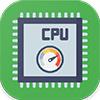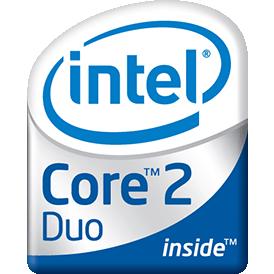 Geekbench 3, 64bit (Multi-Core)
Geekbench 3, 64bit (Multi-Core)
|
|
Intel Core2 Duo E6700
2C 2T @ 2.66 GHz
|
2793
|
|
|
AMD E-300
2C 2T @ 1.3 GHz
|
877
|
 Geekbench 3, 64bit (Single-Core)
Geekbench 3, 64bit (Single-Core)
|
|
Intel Core2 Duo E6700
2C 2T @ 2.66 GHz
|
1524
|
|
|
AMD E-300
2C 2T @ 1.3 GHz
|
489
|
 Estimated results for PassMark CPU Mark
Estimated results for PassMark CPU Mark
|
|
Intel Core2 Duo E6700
2C 2T @ 2.66 GHz
|
1014
|
|
|
AMD E-300
2C 2T @ 1.3 GHz
|
627
|
 Geekbench 5, 64bit (Multi-Core)
Geekbench 5, 64bit (Multi-Core)
|
|
Intel Core2 Duo E6700
2C 2T @ 2.66 GHz
|
617
|
|
|
AMD E-300
2C 2T @ 1.3 GHz
|
189
|
 Geekbench 5, 64bit (Single-Core)
Geekbench 5, 64bit (Single-Core)
|
|
Intel Core2 Duo E6700
2C 2T @ 2.66 GHz
|
365
|
|
|
AMD E-300
2C 2T @ 1.3 GHz
|
106
|
 Cinebench R11.5, 64bit (Multi-Core)
Cinebench R11.5, 64bit (Multi-Core)
|
|
Intel Core2 Duo E6700
2C 2T @ 2.66 GHz
|
1.8
|
|
|
AMD E-300
2C 2T @ 1.3 GHz
|
0.5
|
 Cinebench R11.5, 64bit (Single-Core)
Cinebench R11.5, 64bit (Single-Core)
|
|
Intel Core2 Duo E6700
2C 2T @ 2.66 GHz
|
1.0
|
|
|
AMD E-300
2C 2T @ 1.3 GHz
|
0.3
|

